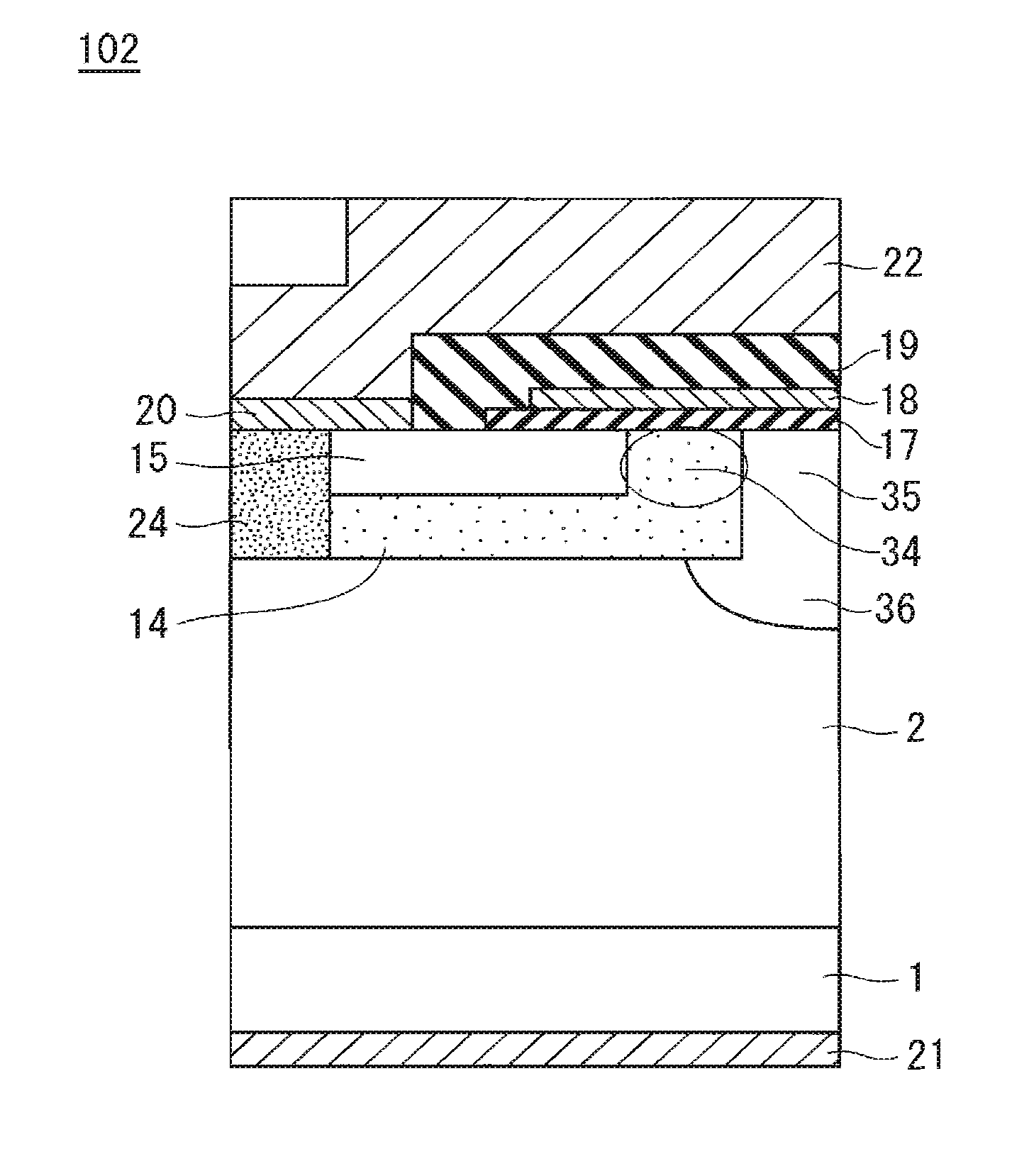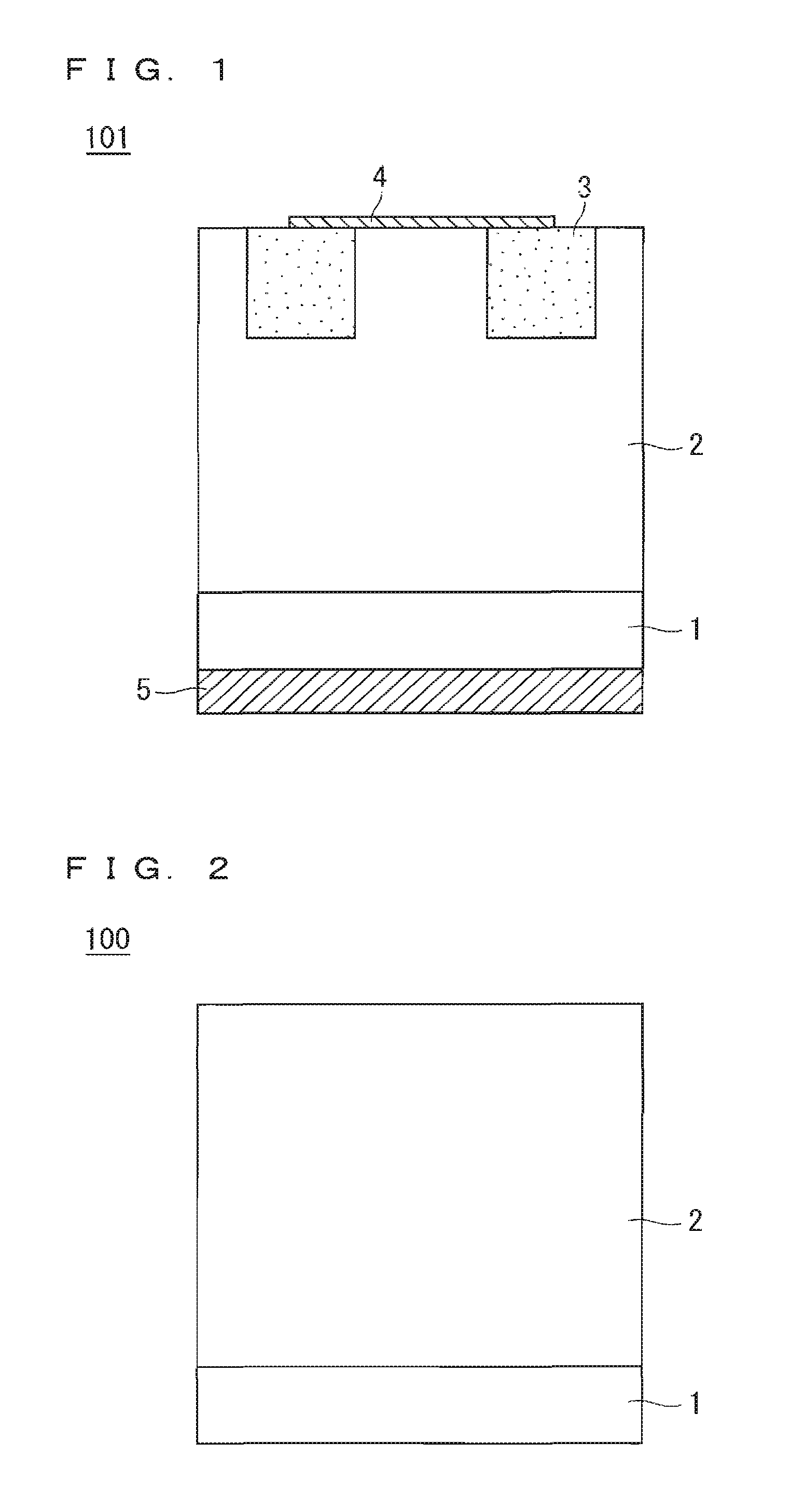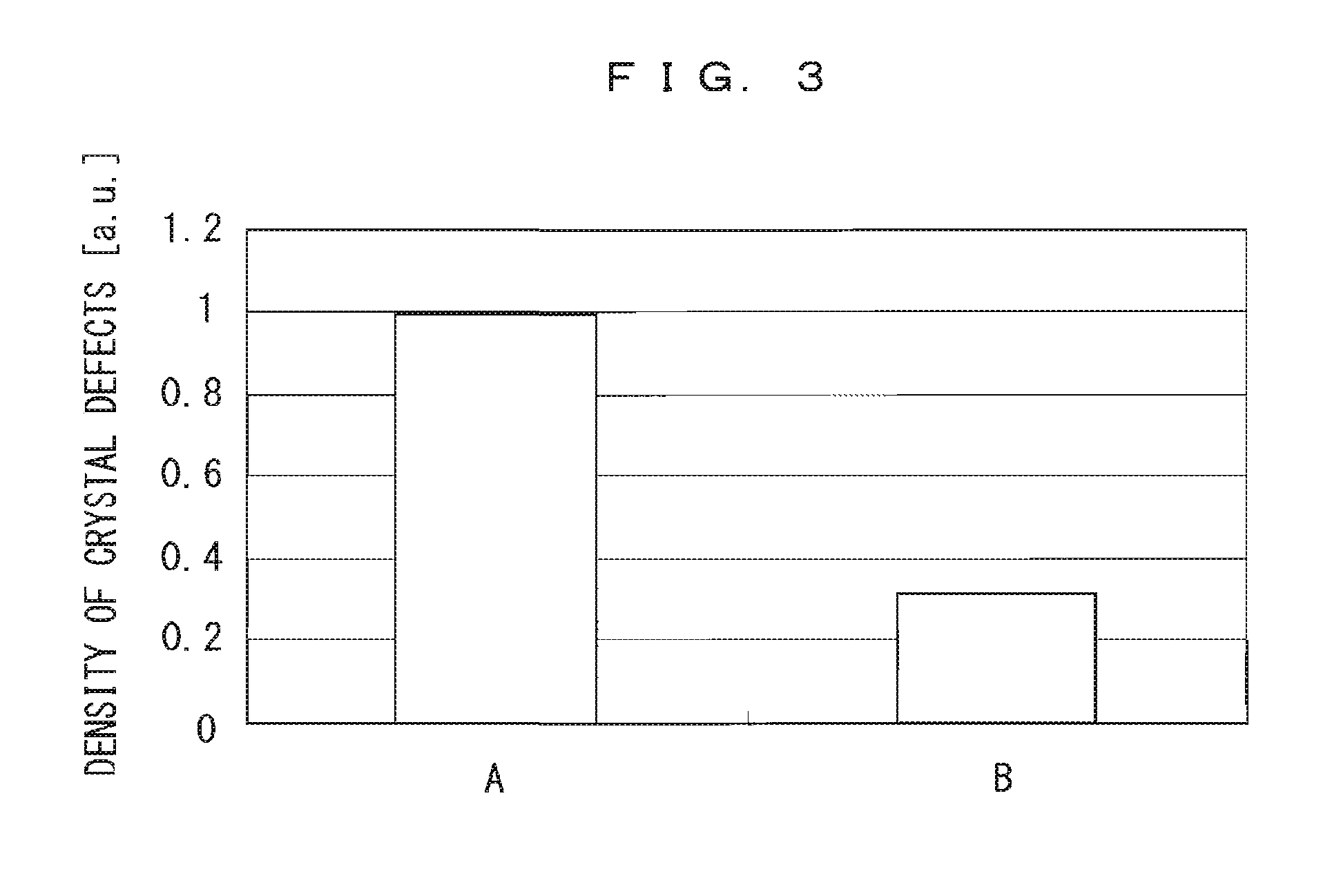Silicon carbide semiconductor device and silicon carbide semiconductor device manufacturing method
a semiconductor device and silicon carbide technology, applied in the direction of semiconductor devices, basic electric elements, electrical equipment, etc., can solve the problems of increasing the conduction loss of the device, increasing the current path in the drift layer, increasing the resistance, etc., to reduce the on resistance and increase the breakdown voltage
- Summary
- Abstract
- Description
- Claims
- Application Information
AI Technical Summary
Benefits of technology
Problems solved by technology
Method used
Image
Examples
first embodiment
SBD, Inclined Epitaxy
[0046]
[0047]FIG. 1 is a cross-sectional view showing a configuration of a silicon carbide semiconductor device according to a first embodiment of the present invention. FIG. 2 is a cross-sectional view showing a structure of an epitaxial substrate according to the first embodiment of the present invention.
[0048]As shown in FIG. 2, an epitaxial substrate 100 includes a silicon carbide substrate 1 of the n-type being the first conductivity type that has an off-angle from a 4H—SiC(0001) plane and has a low resistance, and the epitaxial substrate 100 includes a drift layer 2 of the n-type formed on the silicon carbide substrate 1 by epitaxial growth.
[0049]It is sufficient as long as the silicon carbide substrate 1 is the first conductivity type. The presence or absence of the off-angle does not affect the effects of the present invention.
[0050]Then, a silicon carbide Schottky barrier diode 101 (silicon carbide semiconductor device) shown in FIG. 1 is formed with the...
second embodiment
[0142]
[0143]Hereinafter, the same configuration as the configuration described in the embodiment above is denoted by the same references, and the detailed description will be appropriately omitted.
[0144]FIG. 4 is a cross-sectional view showing a configuration of a silicon carbide semiconductor element according to a second embodiment of the present invention. This embodiment includes a metal-oxide-semiconductor field-effect transistor (MOSFET) as an example of semiconductor elements.
[0145]Herein, the term “MOS” has been used for a laminated structure of a metal, an oxide, and a semiconductor. However, particularly for a field-effect transistor having a MOS structure (hereinafter may simply be referred to as a “MOS transistor”), materials for a gate insulating film and a gate electrode are improved in terms of integration and improvement on manufacturing processes in recent times.
[0146]For the MOS transistor, for example, polycrystalline silicon instead of me...
third embodiment
[0210]
[0211]This embodiment is a modification of the first embodiment. Hereinafter, the same configuration as the configuration described in the embodiments above is denoted by the same references, and the detailed description will be appropriately omitted.
[0212]FIG. 4 is a cross-sectional view showing a configuration of a silicon carbide semiconductor element according to a third embodiment of the present invention. This embodiment includes a metal-oxide-semiconductor field-effect transistor (MOSFET) as an example of semiconductor elements.
[0213]A breakdown voltage holding layer has the same configuration as that shown in the first embodiment. The breakdown voltage holding layer extends from the point where the doping concentration has the value of greater than or equal to 4×1015 cm−3 and less than or equal to 2×1017 cm−3 to the surface of the drift layer 2, and the doping concentration of the dopant continuously decreases in the film thickness direction tow...
PUM
| Property | Measurement | Unit |
|---|---|---|
| thickness | aaaaa | aaaaa |
| conductivity | aaaaa | aaaaa |
| doping concentration | aaaaa | aaaaa |
Abstract
Description
Claims
Application Information
 Login to View More
Login to View More - R&D
- Intellectual Property
- Life Sciences
- Materials
- Tech Scout
- Unparalleled Data Quality
- Higher Quality Content
- 60% Fewer Hallucinations
Browse by: Latest US Patents, China's latest patents, Technical Efficacy Thesaurus, Application Domain, Technology Topic, Popular Technical Reports.
© 2025 PatSnap. All rights reserved.Legal|Privacy policy|Modern Slavery Act Transparency Statement|Sitemap|About US| Contact US: help@patsnap.com



